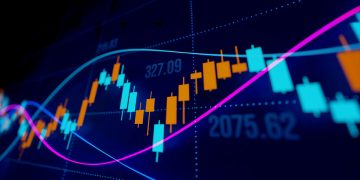In the global equity arena, investors tend to fixate on U.S. markets—and often with good reason. The S&P 500 has consistently delivered strong performance, especially since the financial crisis, driven by powerful secular growth themes like big tech, innovation, and dollar dominance. Yet in 2025, many institutional investors are increasingly eyeing European equities as the next contrarian bet, especially following a series of market corrections that have left valuations depressed but not necessarily broken. The question arises: are these corrections a warning—or a rare opportunity?
From a valuation standpoint, the gap between the S&P 500 and Europe’s Stoxx 600 is now at one of its widest in decades. Meanwhile, currency movements, sector divergences, and macro policy shifts in the EU are setting the stage for potential alpha generation—if U.S. investors are willing to broaden their lens. With patience, precision, and the right sector focus, European corrections could be less about systemic decline and more about cyclical rebirth.
Stoxx 600 Performance and Valuation vs. S&P 500
The Stoxx Europe 600 index, which aggregates large and mid-cap equities from across 17 European countries, has lagged behind the S&P 500 for much of the past decade. In part, this has been due to sector composition: Europe has more exposure to financials, industrials, and energy, while the U.S. is dominated by high-growth technology and consumer discretionary names. That composition difference magnified the outperformance of U.S. equities in recent years, especially during the tech-led rally from 2020 to 2023.
Yet now, as markets transition from growth-driven to rate-sensitive cycles, this very difference may work in Europe’s favor. U.S. valuations remain stretched, with the S&P 500 trading at over 20 times forward earnings. In contrast, the Stoxx 600 is hovering near 12–13 times forward earnings—a sizable discount even after accounting for sectoral disparities.
Particularly in 2025, where investors are more cautious about valuation multiples in a high-rate environment, the attractiveness of Europe’s “value tilt” is growing. Moreover, several EU countries have shown surprising resilience in economic indicators—Germany’s industrial base is stabilizing post-energy shock, France’s consumer data has been buoyant, and the Nordics are emerging as sustainability and tech innovators.
The market correction across Europe since mid-2024—driven by geopolitical fears, sluggish ECB action, and underwhelming earnings in select sectors—has created pockets of deep value. But crucially, it has not sparked a systemic financial panic. This distinction is what’s catching the attention of seasoned U.S. investors.
Hidden Gems in EU Consumer and Industrial Stocks
While the headlines often spotlight troubled sectors—such as legacy banks or energy majors facing ESG pressure—beneath the surface, Europe’s consumer and industrial sectors are teeming with opportunities. Many of these firms are global players with strong brands, competitive moats, and significant revenue outside of Europe—allowing them to benefit from both local and global recoveries.
In the consumer space, luxury brands like LVMH, Hermès, and Richemont continue to exhibit pricing power, especially in Asian markets. Despite slower growth in China, aspirational spending remains strong, and the recovery in high-end travel and tourism is supporting demand. These companies also benefit from weak euro conditions, as a cheaper currency makes European goods more competitive abroad.
Beyond luxury, firms like Unilever, Nestlé, and Adidas have shown operational resilience, maintaining margins even as inflation hits input costs. They are often overlooked in momentum-driven markets but offer stable earnings growth and solid dividends—an appealing combination during late-cycle conditions.
In industrials, companies such as Siemens, Schneider Electric, and ABB are capitalizing on the green transition, smart infrastructure upgrades, and automation trends. These firms are not merely cyclical plays; they are positioned at the heart of long-term transformations across energy grids, factories, and digital infrastructure. In fact, many have greater exposure to AI-driven manufacturing and smart buildings than their American peers.
Additionally, aerospace and defense firms like Airbus and Leonardo have gained relevance amid rising defense budgets and renewed transatlantic security cooperation. While U.S. giants like Lockheed Martin dominate the space, European defense players offer a differentiated growth profile with more attractive entry points.
Currency-Adjusted Returns Outlook
For U.S. investors, the euro-dollar exchange rate is always a key consideration when allocating to European equities. A strengthening dollar can erode gains from foreign stock holdings, while a weakening dollar can enhance them. In 2022 and 2023, the Fed’s aggressive tightening sent the dollar soaring, making EU assets less attractive on a currency-adjusted basis. But in 2025, that trend may be reversing.
The Fed is now nearing the end of its rate-hike cycle, while the ECB, after lagging for much of the pandemic recovery, is under pressure to pivot more decisively. The relative monetary policy gap is likely to narrow, which could result in a more balanced or even weaker dollar environment.
That shift bodes well for U.S. investors allocating to Europe. Even modest euro appreciation—paired with recovery in European equity prices—could offer double-digit returns when translated back to dollars. Moreover, several hedged ETF products now allow investors to manage currency risk more precisely, offering both unhedged and currency-neutral exposures.
Looking at historical periods when the euro has gained versus the dollar, European equities have tended to outperform. In many ways, currency dynamics in 2025 are setting up similarly to 2017, when a synchronized global growth story helped lift both equities and the euro, delivering strong returns for dollar-based investors.

Market Entry Timing Strategies
Market timing is notoriously difficult, but when entering foreign markets after corrections, timing becomes critical for maximizing upside while managing drawdown risk. For European equities in 2025, a few entry strategies are gaining traction among U.S. investors.
The first is staggered allocation—phasing into European equity positions over several months rather than deploying capital all at once. This strategy helps mitigate the risk of catching a falling knife and allows investors to take advantage of any further dips without panic selling.
The second is thematic targeting—focusing entry into sectors or ETFs aligned with specific macro or structural themes rather than broad indices. For example, investors bullish on infrastructure upgrades might enter through targeted industrial ETFs like iShares STOXX Europe 600 Industrial Goods & Services. Those interested in green energy could look to funds with exposure to firms like Vestas or Ørsted.
A third approach is to use relative momentum and valuation signals. Quantitative screens that combine low forward P/E ratios, improving earnings revisions, and positive relative strength indicators can help pinpoint attractive individual stocks or sectors. These screens are particularly valuable in Europe, where regional differences (e.g., between the Dutch tech scene and Southern Europe’s financials) can be stark.
Some investors also pair European long positions with U.S. shorts or underweights in sectors that appear overextended. This market-neutral strategy reduces exposure to broad macro shocks while allowing investors to benefit from valuation convergence between the U.S. and Europe.
Conclusion
European market corrections can often trigger anxiety, but for seasoned investors, they can also signal opportunity—especially when those corrections are driven by sentiment and cyclical softness rather than structural collapse. In 2025, with U.S. equity valuations high and the Fed nearing a policy plateau, European equities look increasingly attractive from a relative and absolute standpoint.
For U.S. investors, the key is not simply buying the dip in Europe, but doing so with a strategic lens. That means targeting undervalued but high-quality sectors, managing currency exposure thoughtfully, and timing entry points to align with improving economic indicators and earnings momentum. It also means moving beyond outdated narratives of European stagnation and recognizing the continent’s evolving role in global themes—whether green innovation, digital infrastructure, or defense sovereignty.
The time may not yet be ripe for a full-scale rotation away from U.S. equities, but smart capital is already preparing for a world where diversification across geographies is not just prudent, but necessary. European markets may finally be turning from laggards to leaders. For U.S. investors watching from afar, the recent correction could be the invitation they’ve been waiting for.


































